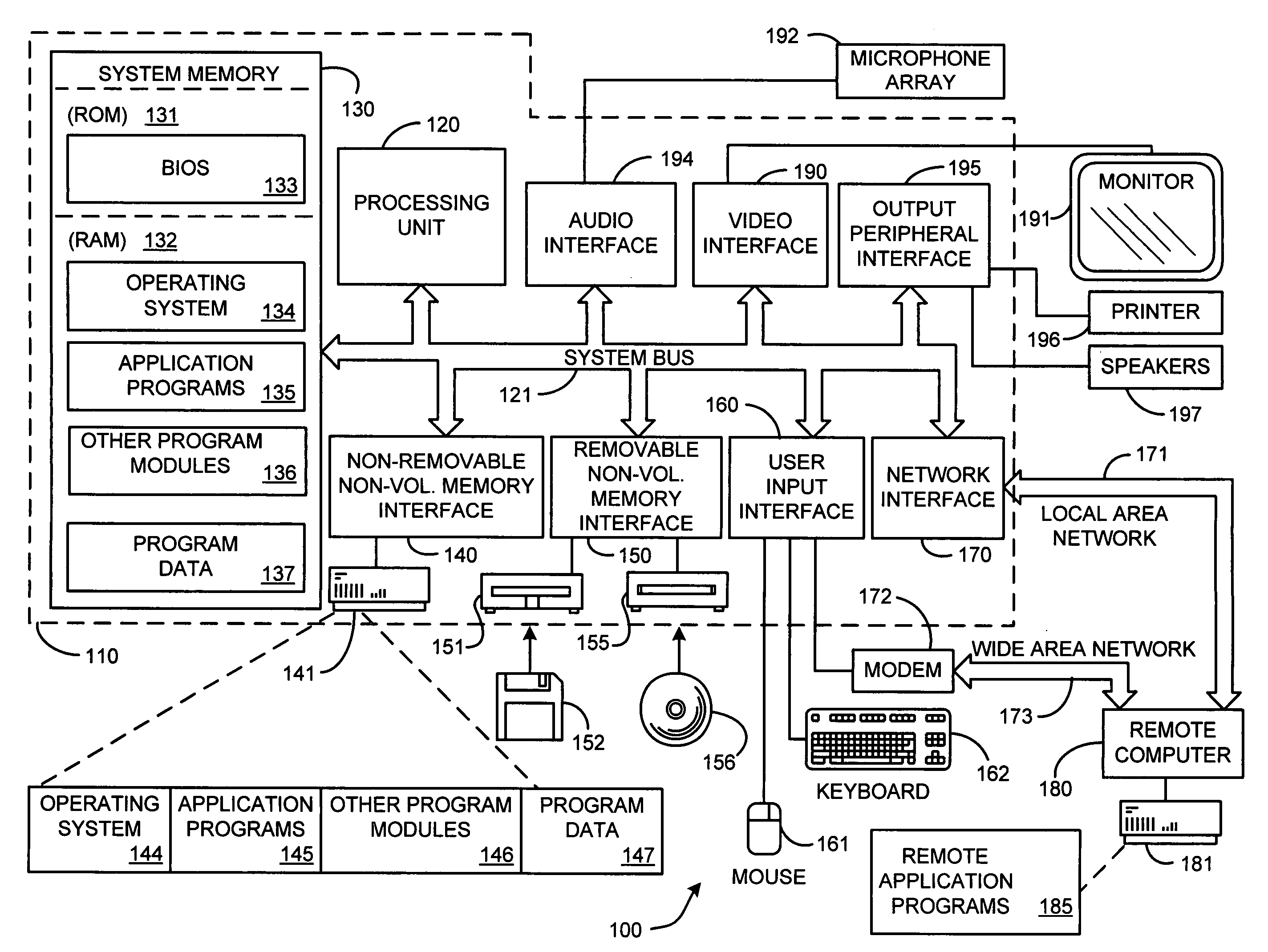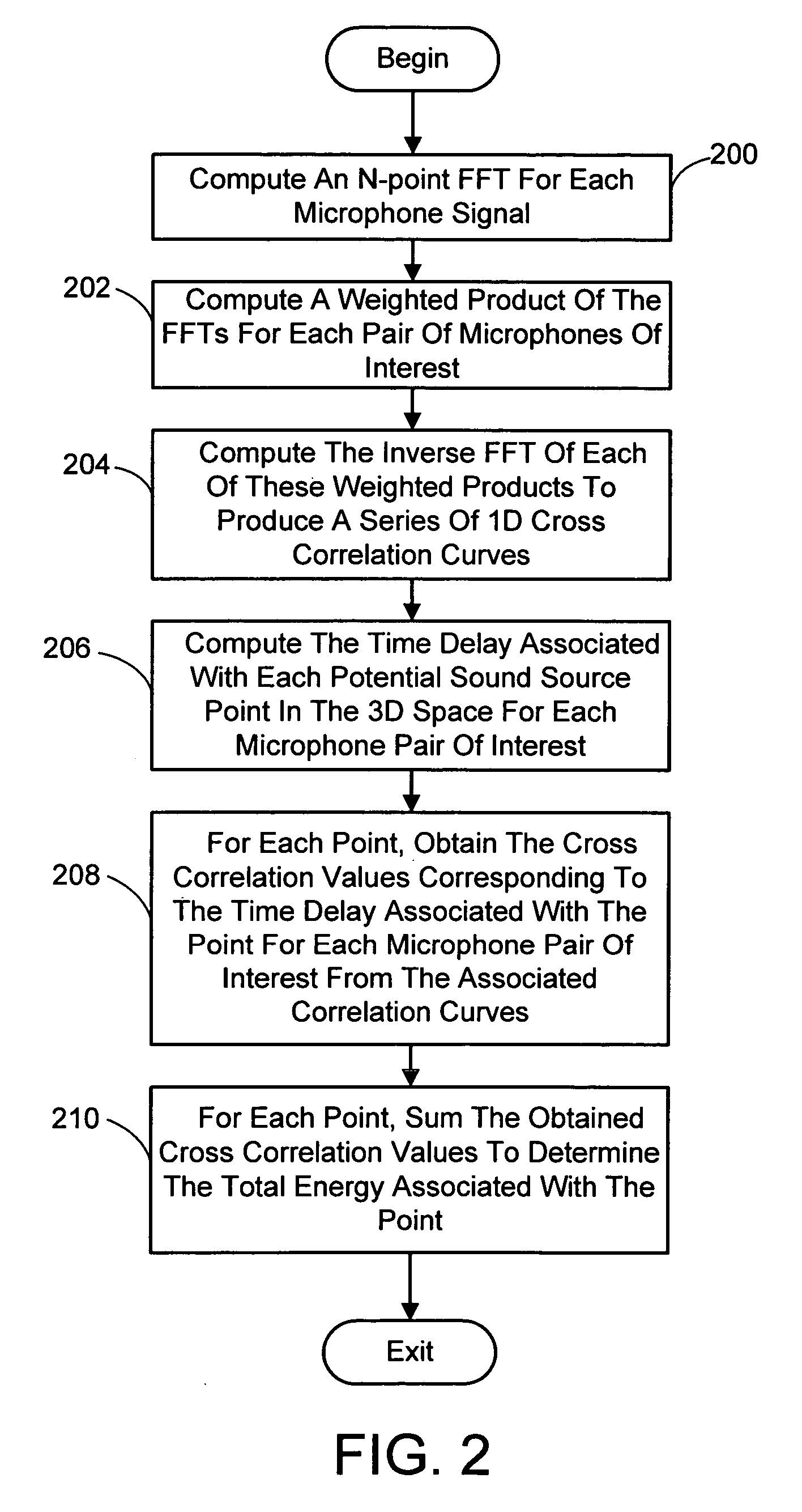System and process for robust sound source localization
a sound source and localization system technology, applied in the field of finding the location of a sound source, can solve the problems of wasting useful information, not fully taking advantage of the weighting function of research into the direct approach, and more computationally expensive than the 2-tdoa method, so as to maximize the energy of each sensor, enhance the robustness of the selected location, and mitigate the effect of uncorrelated noise and/or reverberation
- Summary
- Abstract
- Description
- Claims
- Application Information
AI Technical Summary
Benefits of technology
Problems solved by technology
Method used
Image
Examples
experiment 2
4.3. SB SSL
[0076] The comparison between the proposed new SB approach against existing SB approaches is summarized in Table 2 as shown in FIG. 6.
4.4. Experiment 3: 2-TDOA vs. 1-TDOA vs. SB
[0077] The comparison between the proposed new 1-TDOA and SB approaches against an existing 2-TDOA approach is summarized in Table 3 shown in FIG. 7. The 2-TDOA approach we used is the maximum likelihood estimator JTDOA developed in [2], which is one of the best 2-TDOA algorithms. In addition to using Tests R and S, we further use Test A to see how they perform with respect to different source locations. The result is summarized in Table 4 shown in FIG. 8.
4.5. Observations
[0078] The following observations can be made based on Tables 1-4:
[0079] From Table 1, the proposed new 1-TDOA outperforms the PHAT and ML based approaches. The PHAT approach works quite well in general, but performs poorly when the SNR is low. Tele-conferencing systems, e.g., [4], require prompt SSL, and the promptness of...
PUM
 Login to View More
Login to View More Abstract
Description
Claims
Application Information
 Login to View More
Login to View More - R&D
- Intellectual Property
- Life Sciences
- Materials
- Tech Scout
- Unparalleled Data Quality
- Higher Quality Content
- 60% Fewer Hallucinations
Browse by: Latest US Patents, China's latest patents, Technical Efficacy Thesaurus, Application Domain, Technology Topic, Popular Technical Reports.
© 2025 PatSnap. All rights reserved.Legal|Privacy policy|Modern Slavery Act Transparency Statement|Sitemap|About US| Contact US: help@patsnap.com



